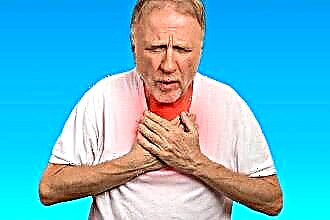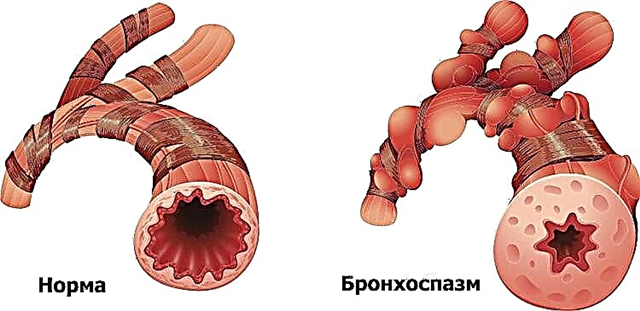By diastolic dysfunction is meant a pathology that is accompanied by impaired blood circulation during relaxation of the heart. A similar problem is diagnosed mainly among elderly women. And it is the diastolic dysfunction of the left ventricle that is more common.
What it is?
 The heart performs its work in the mode of systole (contraction) and diastole (relaxation). Dysfunction is spoken of if there are malfunctions in the functioning of an organ.
The heart performs its work in the mode of systole (contraction) and diastole (relaxation). Dysfunction is spoken of if there are malfunctions in the functioning of an organ.
When left ventricular diastolic function is impaired, myocardial muscle tissue loses its ability to relax at the time of diastole. As a result, the ventricle does not receive the required amount of blood. To compensate for its deficiency, the left atrium is forced to strengthen its work, trying to absorb more blood.
All this negatively affects the state of the atrium, gradually leads to overload, its increase in size. Against the background of systolic dysfunction, stagnation can occur in the venous system and lungs, which entails interruptions in the blood supply to all organs of the human body. The transition of this pathological condition to a more severe form can lead to the onset of chronic heart failure.
Diastole is important because it provides the heart muscle with the necessary oxygen, which is carried through the circulatory system through the coronary arteries.
If it is unable to fully perform its tasks, the left ventricle suffers from oxygen deficiency. This leads to metabolic disorders in myocardial tissues and ischemia.
Prolonged ischemia is detrimental to the cells, instead of which connective tissue is formed. This process is called sclerosis or fibrosis. The altered tissue structure causes a difficult contraction of the left ventricle. Ultimately, the systole also fails.
Classification

The first type of disease is the most common. It is fraught with serious danger, since at the initial stage of development it proceeds practically without any symptoms. It is characterized by a decrease in the ability to distill blood into the ventricle from the paired blood vessel of the pulmonary trunk. The reason for this is the lack of elasticity of the myocardial walls.
The second type of ailment manifests itself against the background of an increase in pressure from the left atrium, which leads to impaired diastole function. It is also called pseudonormal.
The most severe is considered a restrictive type of pathology, when there is a threat to human life, due to serious disorders in the heart. In such situations, heart transplant is usually performed.
If a person has type 1 diastolic dysfunction of the left ventricle, this may be evidenced by edema, which is observed mainly in the evening. This condition is due to the stagnation of fluid in the body. Swelling is usually seen in the lower extremities.
In this case, the patient may complain of heart pain caused by myocardial ischemia. Shortness of breath often occurs after physical activity. Type 1 left ventricular diastolic dysfunction should not be ignored; it requires medical correction.
At the initial stage of development, the disease may not even appear. In the absence of proper treatment, it will progress, resulting in the following signs of left ventricular diastolic dysfunction:
 shortness of breath at rest or after minor physical exertion;
shortness of breath at rest or after minor physical exertion;- increased heart rate;
- feeling of tightness in the chest area and lack of oxygen;
- swelling of the lower extremities;
- bluish color of the skin;
- fast fatiguability;
- heart pain.
It is extremely rare for patients to have a cough that occurs in the evening. Its appearance indicates the presence of congestion in the lungs.
Blood flow to the heart goes through 3 stages:
- muscle relaxation (diastole);
- slow filling of the left ventricle with blood, provided by the difference in pressure within the atria;
- filling the left ventricle with the remaining blood after the contraction of the heart.
We are talking about diastolic dysfunction, when any failure occurs in such a well-functioning system. Pathology of this type can occur due to the presence of the following factors:
- old age;
- postponed myocardial infarction;
- violation of blood flow in the cardiovascular system;
- overweight;
- hypertension;
- myocardial dysfunction.
Abnormalities in the work of the heart provoke addictions in the form of smoking and drinking alcohol. The love for caffeinated drinks affects the condition of the heart muscle not in the best way.
According to experts in the field of medicine, the main provoking factor of this disease is the deterioration of the contracting and relaxing ability of the myocardium. This is usually due to the poor elasticity of his muscle tissue. This condition can lead to a number of diseases, including heart attack, myocardial hypertrophy and arterial hypertension.
Diastolic dysfunction can also affect newborn babies. If a child has an increased blood supply to the lungs, this may be the reason that:
- the size of the heart will increase;
- there will be an overload of the atria;
- tachycardia will appear;
- the contraction of the heart will worsen.
This condition is not considered pathological, therefore, does not require special treatment if it occurs in children immediately after birth. But if the child underwent hypoxia, or was born prematurely, this problem can persist for two weeks.
Treatment
It is possible to diagnose "left ventricular diastolic dysfunction" of type 1, 2 or 3 only after the patient undergoes a series of examinations. To do this, you will need to pass a general urine test, blood biochemistry. You may also need to check the functioning of the thyroid gland, kidneys, liver.
The most informative way to study in the presence of an abnormality of the heart is an ECG.
The procedure lasts only 10 minutes. During its implementation, electrodes are attached to the patient's chest area, which read the necessary information. It is important that the body is relaxed and the breathing calm. The study is recommended to be carried out 2-3 hours after eating.
 Additionally, ultrasound of the heart may be prescribed. This diagnostic method allows you to determine the condition of the organ, as well as check the blood flow. Ultrasound examination does not require any preparation.
Additionally, ultrasound of the heart may be prescribed. This diagnostic method allows you to determine the condition of the organ, as well as check the blood flow. Ultrasound examination does not require any preparation.
Only after receiving the results of a comprehensive examination, the doctor makes a diagnosis and determines further treatment tactics. The main objectives of therapy are as follows:
- normalize heart rate;
- prevent the occurrence of arrhythmias;
- cure coronary heart disease;
- stabilize pressure.
To normalize the heart rate, beta-blockers are used, represented by such drugs as "Concor" and "Atenololl". Heart ischemia is treated with nitrates. Blood pressure allows you to normalize diuretics such as "Hypothiazide" or "Spironolactone".
For diastolic dysfunction, ACE inhibitors are also indicated. Their action is aimed at normalizing pressure. They are usually prescribed for hypertensive patients. Inhibitors, in addition to reducing pressure, protect the heart and help relax the myocardial walls. The drugs in this group include Captopril and Fosinopril.
For preventive purposes, the doctor may recommend taking "Aspirin Cardio". With its help, the blood is thinned, thereby minimizing the risks of blockage of blood vessels.
Forecast
Type 1 diastolic left ventricular dysfunction, in the overwhelming majority of cases, has a favorable prognosis, which cannot be said about the transition of the disease to a restrictive form. It is accompanied by high atrial pressure and is complicated by concomitant heart failure. The forecast in this case is not always reassuring. Heart transplantation may be required to cope with the pathology.
The readmission rate of patients diagnosed with diastolic dysfunction is 50%. The mortality rate for this pathology is 3-7% per year.
In order to prevent the development of irreversible processes, increased attention should be paid to preventive measures. It is very important to eat right, limit salt intake, and control water intake. The diet should be dominated by fresh vegetables, lean meats, cereals and dairy products. Dishes are healthier when steamed or baked in the oven. It is also necessary to completely abandon fried and spicy foods, alcohol, and smoking.

 shortness of breath at rest or after minor physical exertion;
shortness of breath at rest or after minor physical exertion;

